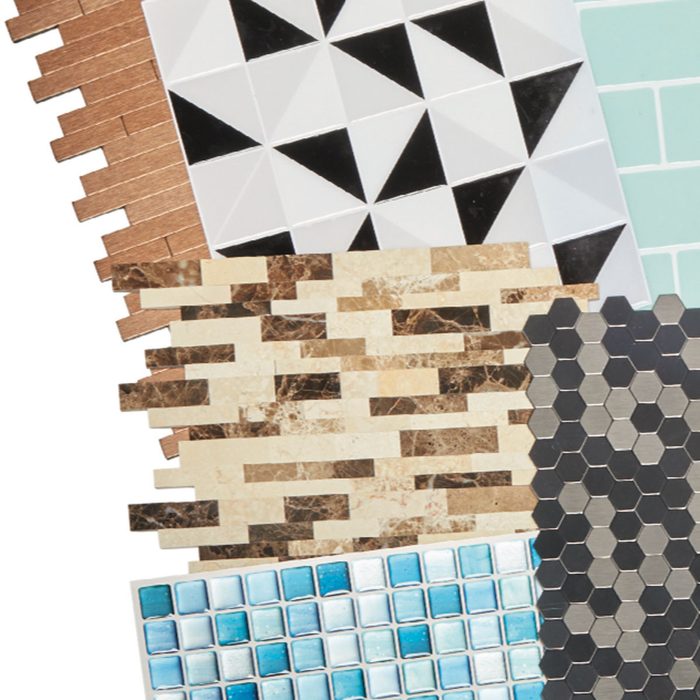What You Need to Know About Peel & Stick Backsplash Tile

Want to make a big impact on your kitchen really fast? Try a peel and stick kitchen backsplash. It’s cheap and easy to install.
Want to make a big impact on your kitchen really fast? Check out adhesive tile. To install it, pull off the backing and stick the tile into place. Misting the adhesive with soapy water gives you a little time to adjust the tile’s position. Unlike with traditional tile, there’s no need to glue it with mastic or thin-set and no need for grout.
These tiles are available in a wide range of designs in vinyl, ceramic, glass and metal-clad. Some of the vinyl tiles look surprisingly good; others look surprisingly bad. It’s worth noting that there will be unsealed joints where the tiles meet, so the end result won’t be as waterproof as a traditional tile installation.
Adhesive tile can be applied over any untextured surface. Clean all surfaces first with a degreaser such as TSP, as if you were going to paint. Allow the surface to dry completely. If you’re installing the tiles on dry- wall, plywood, MDF or particleboard, apply primer first, allowing it to dry for 72 hours before applying the tiles. If the surface is newly painted, however, it’s recommended that you allow at least 21 days for the paint to dry completely. If your wall is textured, you’ll need to remove the texture.
Peel & Stick Backsplash Tile Costs
Prices vary greatly. Vinyl peel and stick tile is the cheapest at $8 to $10 for a pack of ten 10-in. or 12-in. square tiles. Ceramic, glass or metal clad tiles can be as much as $15 for a single 12-in. square tile. That seems expensive, but when you consider the enormous reduction in mess and labor, it might be a bargain.
Cutting Peel and Stick Tiles is Simple
For cutting vinyl tiles, you’ll only need a pair of scissors.
Cut ceramics or glass using an angle grinder with a diamond cutting wheel, or a wet saw.
Cut metal-clad tiles using an angle grinder out- fitted with an abrasive wheel.
If the tile pattern allows, you’ll be able to size non-vinyl tiles using only a utility knife and cut- ting between rows. However, you’ll still need a grinder to trim the ends.
Learn how to tile a DIY backsplash







